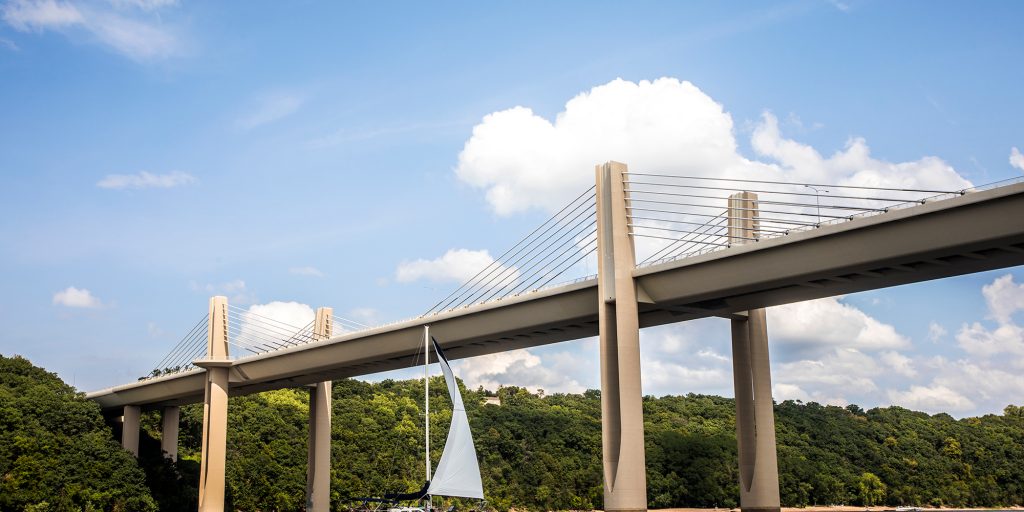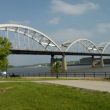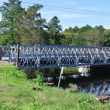How local governments can improve bridge projects through strategic engagement
The United States is home to more than 46,000 structurally deficient bridges, according to the latest infrastructure report card from the American Society of Civil Engineers. Two out of five bridges are at least 50 years old. These daunting numbers reveal a pressing need for governments at all levels to repair, replace or preserve their infrastructure. But they also represent an exciting opportunity—to design and build structures that embody a community’s cultural character, creating a community asset in addition to meeting practical, utilitarian purposes.
Accomplishing this goal of designing bridges that reflect community aspirations while recognizing budgetary realities and technical requirements can be formidable. It’s often assumed that focusing on the aesthetics or community features of a bridge will be more expensive or add unnecessary cost. But that doesn’t have to be the case. With dedicated public engagement and new design technology, bridge design teams can navigate the quantitative requirements of public owners as well as the qualitative expectations of a community to identify solutions that deliver more value.
Community-supported bridge design
In working on bridge projects across the country, HDR has honed a four-part process for understanding community needs and desires, matching those requirements with the budget and schedule constraints of a project, and then partnering with the owner and stakeholders throughout the design process to deliver a structure that addresses form as well as function.
This form-finding process goes beyond typical context-sensitive design to connect emotionally with a community. Itconsists of four broad steps, which altogether take six to nine months and ends with a bridge selected and preliminary design completed:
- Listening
- Concept Development
- Concept Refinement
- Selection
Listening to users, developing stakeholder priorities
The first step begins with listening. Those who will be using the bridge are given a voice through public outreach meetings and surveys. Big ideas are encouraged as the design team seeks to understand the core values of the community and what’s most important. These desires could be practical, such as adding protected bike lanes, reducing traffic congestion or reconnecting divided neighborhoods. But you also want to understand what resonates with the community on an emotional level to inform key aesthetic features. Asking for reactions to many bridge types, features and other bridges helps pinpoint how residents want a bridge to look.
At the same time, these meetings are also informative for residents, educating them on the requirements and constraints of the project. Budget needs are always kept in mind. At the end of this step, evaluation criteria are developed to assess and narrow possible concepts.
The second step, concept development, begins creating concepts that match the list of community desires while keeping in mind the needs of project owners. Technology such as parametric design and smart models helps quickly develop ideas into visual concepts that let stakeholders see the impact of different materials, structure types, configurations and more.
At the end of this step, bridge concepts are reviewed with owners, based on the criteria developed. Some are eliminated, others are merged and some are kept with suggested improvements.
Concepts refined and selected, in partnership with owner
Next, the remaining concepts are refined. Engineering expertise guides continued development, and cost ranges are developed with more confidence as details come into focus, such as lighting, colors or size of specific elements. At the end of this step, a limited number of concepts are advanced.
The final step in creating a bridge design shaped by and built for its community is selection. This begins with a small number of final concepts—three or fewer—which are vetted with the owner and presented to project stakeholders. Feedback from the community is taken into account, but the final decision remains with the bridge owner. After a selection is finalized, engineering work continues to take the selected concept from preliminary to final design.
Better for residents and owners alike
This process, which ends with a bridge design supported by and developed in partnership with the community, holds multiple benefits for municipal, county or state owners.
It inspires community appreciation, builds community acceptance and creates community amenities. When residents are involved in the design process, understand the limitations of a project and have input on the aesthetics of a bridge, they are more likely to appreciate the bridge.
On the border of Minnesota and Wisconsin, bridge designers undertook a rigorous public engagement effort during the design of the St. Croix Crossing, which was built across a federally protected waterway. Working with the community to address concerns from the beginning meant a bridge that matches its environment, fits with its scenic setting and has become a popular destination for outdoor enthusiasts. Careful listening can help to avoid or mitigate opposition that can delay or derail projects, particularly in sensitive areas.
Bridges customized for each community
The effort needed to create iconic, signature structures does not make sense for every bridge and every location. But as the nation tackles its aging infrastructure, there is an important opportunity to create bridges and structures that better reflect their communities, even within limited budgets and schedules.
Specialized experts in planning, design and engineering can help governments navigate this complex process, from initial environmental justice considerations to the aesthetic ramifications of the latest advances in structural engineering. By starting with a deep understanding of the community and its culture, the result is a bridge customized to each location that considers local transportation needs, site conditions, weather, the visual landscape, unique cultural aspects and more.
HDR senior project manager Michael Fitzpatrick, AAIA, has brought his architectural vision to a wide variety of transportation projects over the past 25 years, including pedestrian facilities, specialty structures and long-span bridges. He is responsible for the visual quality of structures, coordinating corridor aesthetics and providing context sensitive design.
HDR transportation project designer Jimmy Vincent is an experienced designer and visualization creator. He works with project teams to help clients and the public visualize design concepts and their impact.




















